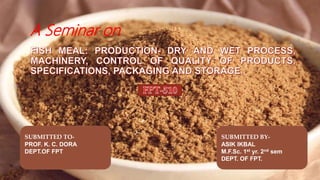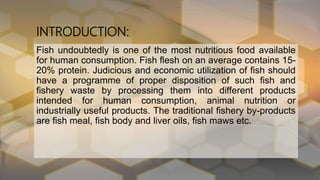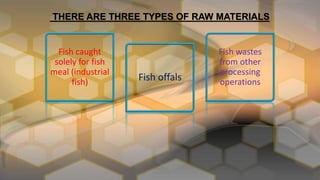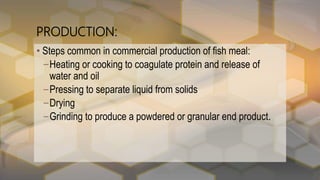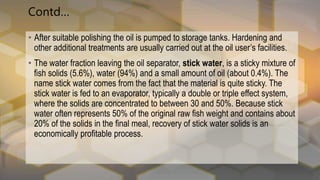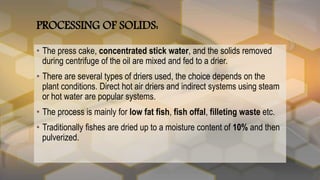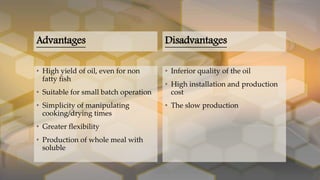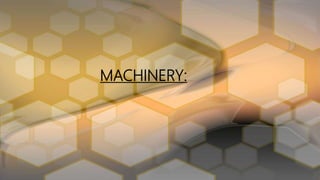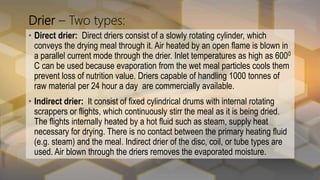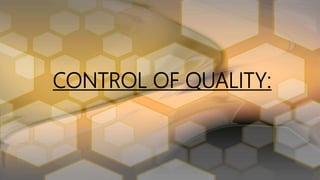1. The document discusses the production of fish meal, which is a concentrated feed obtained by milling and drying fish flesh that is high in protein and minerals.
2. Key steps in the production process include heating fish to coagulate proteins, pressing to separate solids from liquids, drying the solids, and grinding into a powder.
3. Pelagic fish like sardines, mackerel, and anchovies are commonly used as raw materials for fish meal production due to their high protein content and availability.
